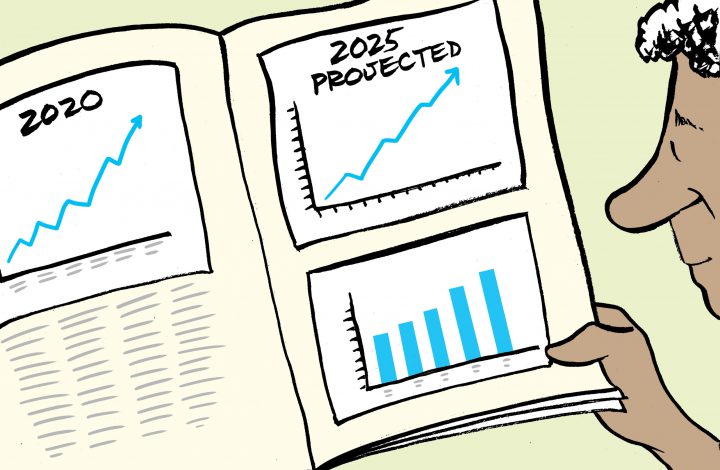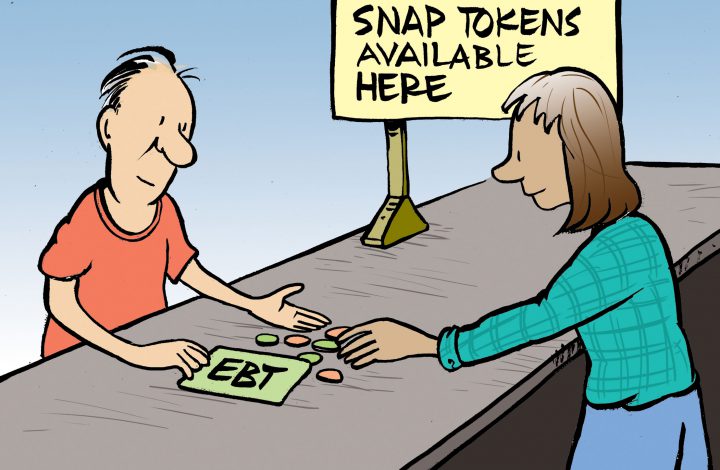The financial plan is a key part of a farmers' market business plan because it identifies and describes the current financial status of a business (the assets, revenue, costs, etc) as well as a prediction of the future financial performance of the business.
The financial plan not only plays a central role in convincing potential investors or lenders to consider supporting the business, but it also provides a financial forecast to help develop the business over time. Therefore, information in the financial plan should be based on actual numbers generated by the business such as the amount of money already invested, current sales figures, combined costs, cash flows, and marketing costs. Predictions about the financial future of the business should be based on realistic patterns and trends in the performance of the business (growth or decline in sales, total revenue, total costs, etc.). This guide will show easy steps to begin developing a financial plan, present the different sections contained within a financial plan, and provide a list of resources to help develop a farmer’s market business financial plan.
Before Building a Financial Plan
A solid financial plan is based on real data and numbers, and this makes it necessary to do a little research before developing a financial plan for a farmers’ market business. This can be as easy as getting a notepad and jotting down answers to some basic questions:
- Assess the financial situation: What is the business’s net worth, or the current value of all financial (cash, salary, bank accounts, etc.) and non-financial (equipment, property, etc.) assets? What are the current financial liabilities such as outstanding debts, employees, leases, etc?
- Create a budget: The budget offers a “health check-up” of a business by determining if profits are going up or down. The budget should identify how much money is going in and out each week, month, quarter, and year. Track the money coming in (sales revenue) and going out (employees, rent, insurance, etc.) on a chart or spreadsheet. Be sure to consider ‘hidden’ costs such as fuel for transportation to and from markets, packaging materials, accounting fees, credit card fees, etc. It helps to create a business account that is separate from a personal account to get an accurate idea of the money that goes in and out of a business. Prioritize needs and consider expenses that can be reduced or cut.
- Set financial goals: Identify short, medium, and long term goals to help follow the ideal growth plan. Set concrete dates to meet those goals. Setting and meeting these targets not only helps move the business forward but also failing to meet the target can help identify obstacles affecting growth. It is important to be realistic and to regularly review and refine the goals as needed.
- Identify the risk tolerance: A risk is any potential threat against the performance of the business. In Florida, a risk can be as significant as a hurricane or as minor as a week-long case of the flu that affects the ability to attend a market. Risk tolerance is the amount of loss a business can handle without failing. Things to consider when evaluating risk tolerance:
- How much time can the business afford to operate without a profit?
- How much personal financing is available to cover costs if necessary?
- Create a plan outline: A comprehensive plan requires investing money into the business, building the business wealth, and also accounting for tax, insurance, and debt obligations as well as unexpected emergency situations.
- First, prioritize needs and set short-term and long-term goals. For example, securing a commissary kitchen is a need and expanding into one’s own certified kitchen is a goal.
- Next, develop steps to reach each short- and long-term goal. Include activities, resources, equipment, materials, and time frames.
- Now identify potential risks and develop strategies to address them. For example, the risk of losing refrigerated products due to electricity outages during a hurricane can be reduced by purchasing a generator and/or insurance.
- Highlight areas of the plan that need routine review and modify the plan on a regular basis: It is important to routinely review the budget to look for changes and adjust the plan when resources, needs, and situations change.
Developing a financial plan is a great way to gain a sense of the current financial needs
Creating the Financial Plan
There are a wide variety of formats for a financial plan, and most financial plans have at least five sections: sales projections, expense budget, cash-flow statements, balance sheet, and break-even analysis. Creating a financial plan from scratch can feel daunting, yet there are a wide variety of quick and easy software programs designed to produce financial reports and documents for planning. Most of the software programs that are shared below are available online and can be linked directly to a business bank account to guarantee accurate and detailed accounting.
Sales Projections
This section should describe the sales forecast, or amount of money the business expects to earn in the future. The forecast is based on past sales trends and additional factors that may increase or decrease sales. Most sales projections cover a three- to five-year span into the future. A projection may be represented in the form of a spreadsheet divided into monthly or quarterly sections, and charts and graphs can provide an easy way to visual describe future growth or decline. For tips on creating a sales forecast visit Sales Forecast (SCORE) and How to create a sales forecast.
Expense Budget
This section includes a calculation of current business expenses as well as any expected or possible expenses that may appear during the time period. The expense budget may be organized into monthly, quarterly, or yearly increments. For more info on how to create an expense budget, visit Business Expense Budget (Microsoft) and How to create an expense budget (BPlans).
Cash Flow Statements
This section describes how and when money comes into the business (sales, etc.) and where and when it goes out (expenses). It is important to break the cash flows into specific sections in order to identify areas of high costs or profitability. While sales (in) and cost of ingredients (out) are obvious cash flows that are easy to track, less obvious cash flows include operating costs and investments, and routine costs such as fuel to transport products and supplies to make signs. By adding, subtracting, and tracking cash in and out of a business, a cash-flow statement can help identify problem and prospering areas in a business. For tips on how to generate a cash-flow statement, visit Cash Flow Statement (Quickbooks) and How to create a basic cash flow statement (Khan Academy).
Balance Sheet
A balance sheet calculates business assets and liabilities. It can help identify current or projected activity associated with functions such as accounts payable (money owed to others), accounts receivable (money owed by others), assets (property and cash), and liabilities (costs). For tips and information on ways to create a balance sheet, visit Balance Sheet Template (SCORE), How to read a balance sheet, and How to create a balance sheet
A solid financial plan is based on real data and numbers
Break-Even Analysis
The information in the break-even analysis helps establish the minimum criteria necessary for a business to “break even” and start making money. The break-even point is tied to production, and it is a look at the total cost of producing and selling the item relative to the total sales of the item. This is particularly important for starting a new business, because it will establish the point where the business is expected to succeed and turn a profit. The analysis begins with categorizing production costs that are variable (costs which are changing as production changes) and those that are fixed (costs which stay the same regardless of production changes).
Both fixed and variable costs are subtracted from revenue earned from sales, and this identifies the amount of sales a business must make in order to cover the cost of production. A break-even chart is a good way to help investors visualize your business, because it is all of the data from your break-even analysis placed into a graph that shows costs at different levels of activity and the variation of income (or sales revenue). For more information on conducting a break-even analysis, visit Business Tutor and How to perform a break-even analysis
A break-even chart is a good way to help investors visualize your business
The Financial Plan and Your Farmers’ Market Business
Developing a financial plan is a great way to gain a sense of the current financial needs and demands of a farmers’ market business and to develop an understanding of the financial requirements to grow a business. The steps presented in this guide provide an introduction to building a financial plan, and the resources below offer training, templates, and guidance. Developing a comprehensive financial plan can encourage good business management and inform potential partners and investors about the health of the business. For more information on topics and issues related to the financial plan, visit the Business Plans, Business Permits, and Regulatory Agencies guides on this website.
References & Resources






